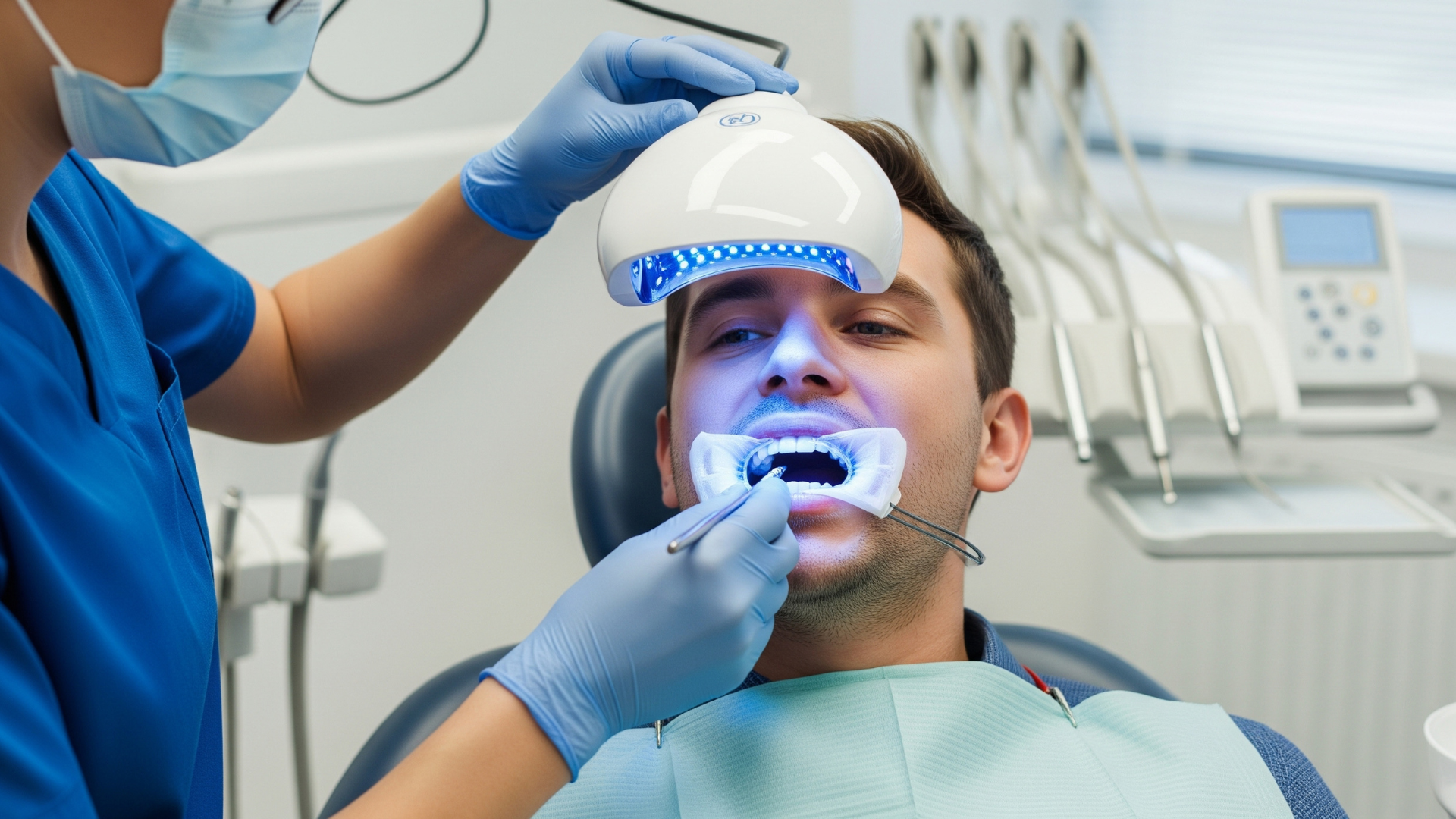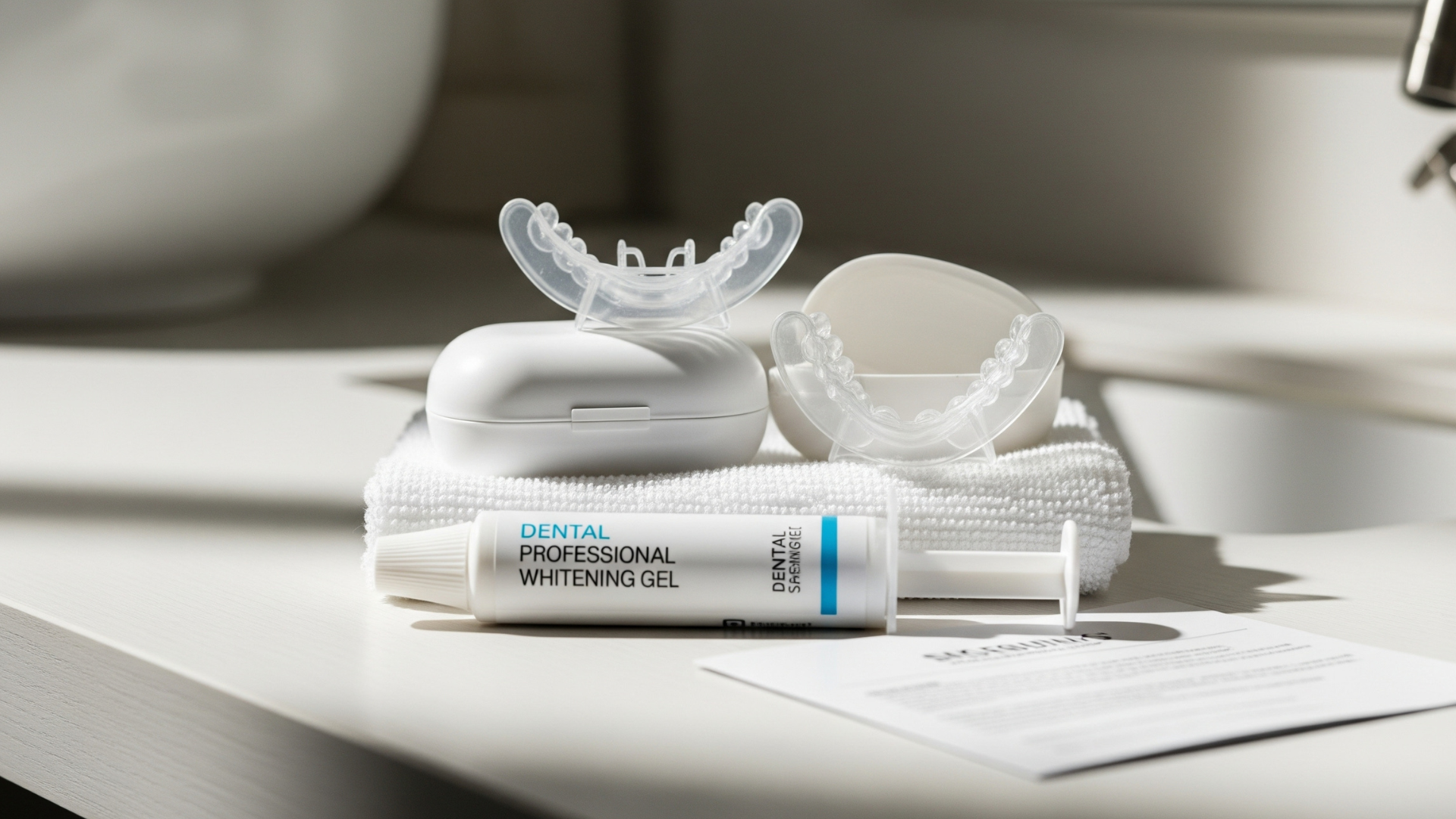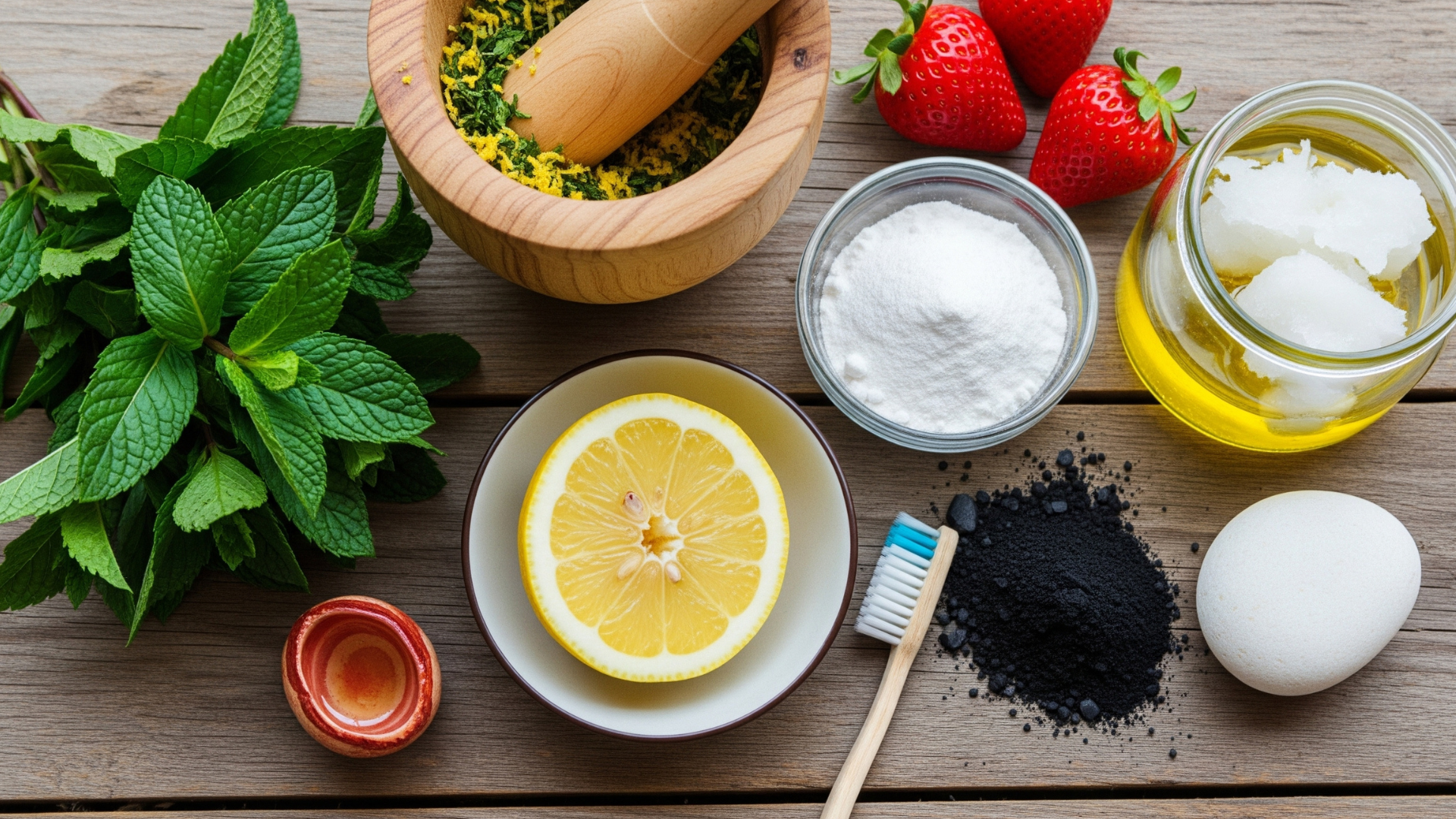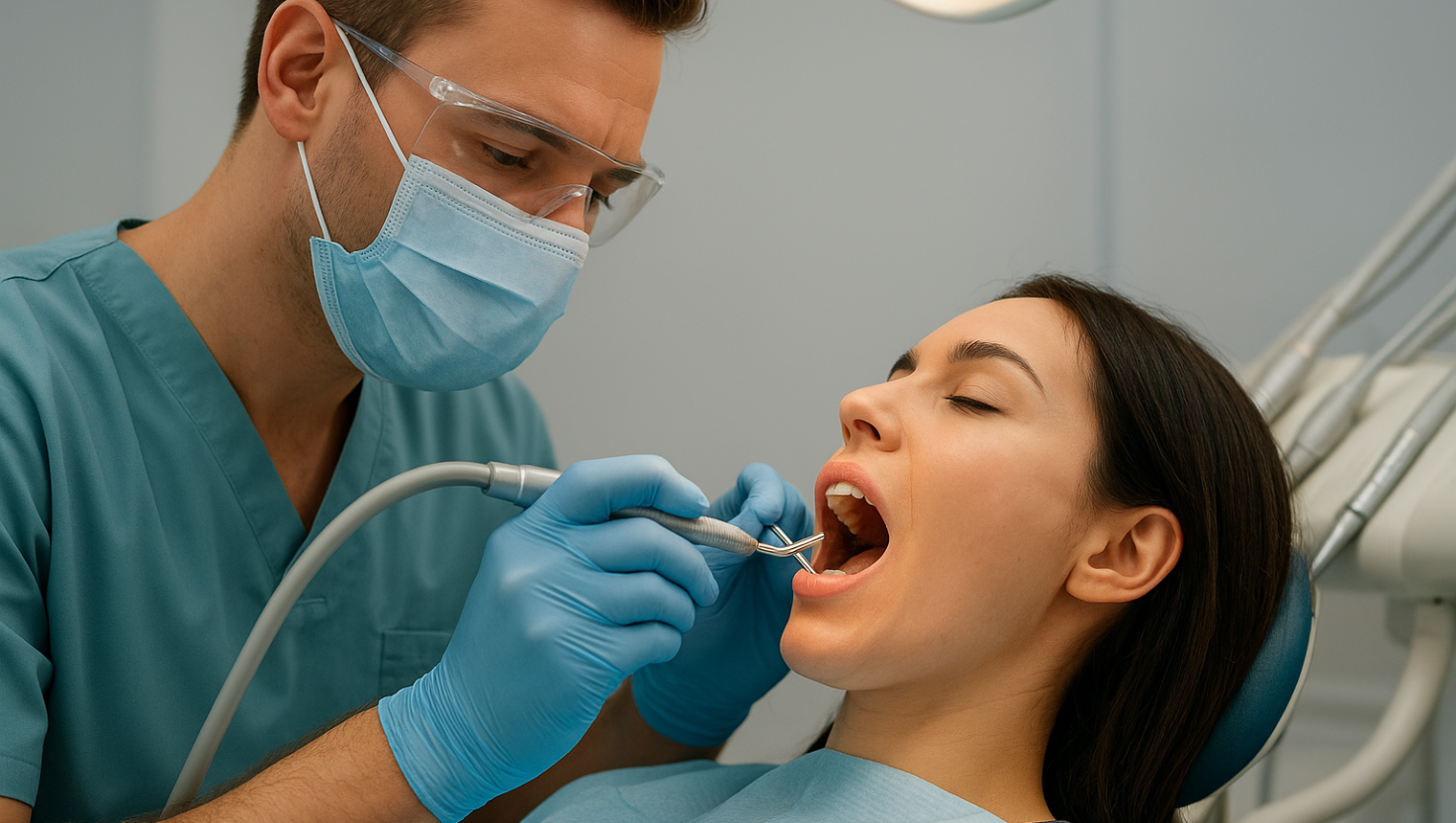4 Types of Teeth Whitening Treatments Explained
Summary
- Stains caused by coffee, wine, tobacco, and time can be removed by teeth whitening.
- These options include in-office, dentist-prescribed kits, OTC products, and natural remedies.
- Professional whitening gives the result quickly.
- At-home kits offer a mix of convenience and dental instructions.
- Over-the-counter products and pastes are more inexpensive and gradual.
- Natural remedies have minor effects, yet they also pose certain risks.
- Sensitive teeth can also be whitened less dangerously under a dentist's control.
Coffee, red wine, tobacco, and even the natural aging process can leave teeth looking dull and stained. But here’s the good news: modern teeth whitening treatments can brighten your smile faster and more effectively than ever before.
With so many choices—professional in-office sessions, dentist-supervised take-home kits, store-bought strips and gels, or even whitening toothpastes—it’s easy to feel overwhelmed.
So, which method works best? Which one is safe if you have sensitive teeth? And how long will the results really last?
This guide breaks down the four main whitening options, explains their pros and cons, and provides expert-backed insights to help you pick the method that fits your lifestyle and budget.
What are the Different Teeth Whitening Methods?
Professional In-Office Teeth Whitening

What is In-Office Whitening?
Dentists apply a high-concentration bleaching gel (usually hydrogen or carbamide peroxide) directly to teeth. Sometimes, a special light or laser is used to accelerate the whitening effect. The treatment usually takes about an hour and can brighten teeth by several shades in a single session.
Why Go for Professional Whitening?
- Immediate, dramatic results
- Performed under dental supervision
- Customized intensity for your teeth
- Can lighten deep stains effectively
Best For
Suitable for adults with healthy teeth and gums seeking quick results. It may not be ideal for people with crowns, veneers, or significant sensitivity.
At-Home Whitening Kits from Dentists

How Take-Home Whitening Kits Work
Your dentist creates custom-fitted trays for your teeth. Professional-strength whitening gel is applied inside the tray, which you wear daily for a set duration over one to two weeks.
Why Go for Dentists-Prescribed Kits?
- Professional strength gel with gentle results
- Customised trays eliminate gum irritation
- Handy to use at home
- Safest compared to over-the-counter ones through the guidance of dentists
Best For
Patients seeking immediate results at a lower cost than in-office whitening. Also ideal for those who want to maintain a bright appearance after undergoing professional treatment.
Over-the-Counter Whitening Products

Whitening Gels and Strips
These have lower concentrations of peroxide. Strips are applied directly to teeth every day within 30-60 minutes, while gels come in pens or small trays.
Whitening Toothpaste & Mouthwash
Toothpaste includes weak abrasives and even chemicals to remove stains, whereas peroxide-containing rinses can help lighten the discoloration found on the surface.
Pros and Cons of OTC Whitening
Pros: Cheap, available, and easy to use.
Cons: The results are slower, less spectacular, and sometimes only deeper stains are not targeted.
The products can be used during maintenance, but they rarely compare to the professional teeth whitening results.
Natural Teeth Whitening Remedies

Common Home Remedies
Baking soda, activated charcoal, and oil pulling are among the most popular natural approaches.
Are Natural Remedies Effective?
They may reduce surface stains, but are unlikely to produce the same brightness as bleaching methods.
Risks of DIY Whitening
- Excess use of the abrasives may harm the enamel
- Inflammation of the gums due to harsh agents, such as charcoal
- Lack of long-term safety
Benefits of Teeth Whitening
The advantages go beyond cosmetics:
- Boosted self-esteem – A whiter smile encourages more confidence.
- Better oral habits – Patients often brush and floss more diligently.
- Youthful appearance – Bright teeth are linked with good health and vitality.
- Tailored choices – From instant results to gradual methods, options suit every lifestyle.
These benefits of teeth whitening explain why it’s one of the most popular dental services.
Teeth Whitening for Sensitive Teeth
Patients with tooth sensitivity don’t have to avoid whitening. Options include:
- Using low-concentration gels with longer application times
- Applying desensitizing toothpaste before and after treatment
- Dentist-monitored in-office whitening with sensitivity-reducing agents
- These methods allow patients to enjoy whiter teeth without unnecessary discomfort.
Best Teeth Whitening Options – How to Choose
The right method depends on your goals:
- Looking to experience fast, dramatic results?
Select in-office whitening.
- Need the home convenience with dentist instructions?
Take-home kits are always good.
- Want options on a budget?
Over-the-counter products treat mild stains.
- How to address the sensitivity?
Order with doctor-supervised mild solutions.
Final Takeaway
There’s no one-size-fits-all solution when it comes to brightening your smile. From in-office whitening for instant results to at-home kits, over-the-counter products, and daily-use pastes, every option has its place. The key is choosing the method that matches your lifestyle, budget, and dental health.
Whitening can be safe, effective, and life-changing—especially with professional guidance. If you’re ready to explore your best teeth whitening options, consider partnering with a trusted dental team.
Brighten Your Smile with Three Oaks Dental
At Three Oaks Dental, we offer safe and effective whitening solutions tailored to your unique needs. Whether you want fast, in-office results or a custom take-home kit, our team ensures you achieve a radiant smile comfortably and confidently.
Schedule your consultation today and let us help you reveal the bright, confident smile you deserve.
Frequently Asked Questions
What are the different teeth whitening methods?
The main methods include professional in-office whitening, dentist take-home kits, over-the-counter strips and gels, and whitening toothpastes. Some people also try natural remedies, though these are less effective.
What is the most effective teeth whitening treatment?
In-office whitening is the most powerful option, as dentists use high-concentration peroxide gels with professional equipment to achieve dramatic results in just one session.
Is UV or LED better for teeth whitening?
Both UV and LED lights are used to accelerate the whitening gel. LED is more commonly used today because it’s safer and less likely to cause gum irritation. The key factor, however, is the gel concentration rather than the light source.
Is laser or gel whitening better?
Laser whitening enhances the effects of whitening gel by speeding up the process, but the gel itself is the active ingredient that bleaches stains. A laser may deliver faster results, but a dentist-supervised gel is often preferred.

